Related Research Articles

The Neighborhood Association was the smallest unit of the national mobilization program established by the Japanese government in World War II. It consisted of units consisting of 10-15 households organized for fire fighting, civil defense and internal security.
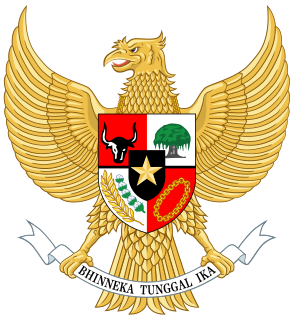
Indonesia is divided into provinces. Provinces are made up of regencies (kabupaten) and cities (kota). Provinces, regencies and cities have their own local governments and parliamentary bodies.
In Indonesia, village or subdistrict is the fourth-level subdivision below a district, regency/city, and province. There are a number of names and types for villages in Indonesia, with desa being the most frequently used for regencies and kelurahan for cities. According to the 2019 report by the Ministry of Home Affairs, there are 8,488 urban villages and 74,953 rural villages in Indonesia.
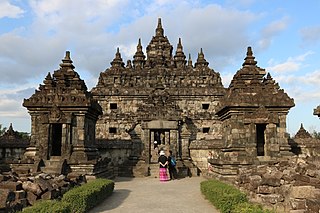
Klaten Regency is a regency in Central Java province in Indonesia. It covers an area of 655.56 km2 and had a population of 1,130,047 at the 2010 Census and 1,260,506 at the 2020 Census. Its capital is the town of the same name.

Sumenep Regency is a regency of the East Java province, Indonesia. It has an area of 2,093.59 km2 and a population of 1,042,312 inhabitants according to the 2010 census ; the 2020 census resulted in a total of 1,124,436. The official estimate as at mid 2021 was 1,134,810. The regency occupies the eastern end of Madura island and also includes numerous islands to the east, the north, and the south of Madura. It is bordered by the Pamekasan Regency to the west, Madura Strait to the south, and the Java Sea to the north and east. Its administrative capital is Sumenep. The airport nearby is Trunojoyo Airport with flights to Surabaya.
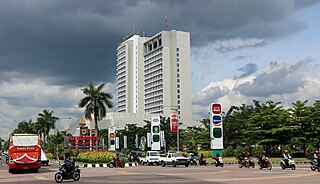
Sukoharjo Regency is a regency in the Central Java province in Indonesia. It covers an area of 466.77 km2 and had a population of 824,238 at the 2010 Census and 907,587 at the 2020 Census. Its capital is Sukoharjo, about 10 km south from Surakarta. This regency is bordered by the city of Surakarta in the north, Karanganyar Regency in the east, Wonogiri Regency and Yogyakarta in the south as well as Klaten Regency in the west. The regency is part of the metropolitan zone of Surakarta, which is known as Subosukawonosraten.
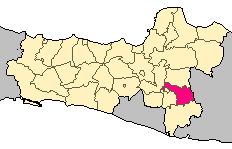
Karanganyar Regency is a regency in the Indonesian province of Central Java. It covers an area of 773.79 km2 and had a population of 813,196 at the 2010 Census and 931,963 at the 2020 Census. Its capital is the town of Karanganyar.
Gesang is a small town located the Tempeh subdistrict of East Java, approximately 30 minutes drives from Lumajang and 4 hours from Surabaya. It borders the towns of Jokarto (North), Pulo (East), Jatisari, Semumu (South) and Nguter (West).

Timang beach is a beach attraction at the boundary between the sea and the land that is located in Gunungkidul, Yogyakarta, Indonesia. Timang beach lies between Siung and Sundak beach in Gunungkidul. The uniqueness of this beach is that there is an island called Panjang Island which is lobster habitat across coastal marine.

Cibeet River is a river in Dayeuhluhur, Cilacap Regency, Central Java, Indonesia, about 220 km southeast of the capital Jakarta.
A kampong is the term for a village in Brunei, Indonesia, Malaysia and Singapore and a "port" in Cambodia. The term applies to traditional villages, especially of the indigenous people, and has also been used to refer to urban slum areas and enclosed developments and neighbourhoods within towns and cities in Brunei, Indonesia, Malaysia, Singapore, Cambodia, Sri Lanka and Christmas Island. The traditional kampong village designs and architecture have been targeted for reform by urbanists and modernists and have also been adapted by contemporary architects for various projects.

Tepus is a district (kapanewon) of Gunung Kidul Regency, Yogyakarta Special Region, Indonesia. The boundaries of Tepus District are with Girisubo District on the east side, Semanu District on the north side, Tanjungsari on the west side and the Indian Ocean on the South side.
Pantai Siung is one of tourism located in Kecamatan Tepus, precisely located in Dusun Duwet, Kelurahan Purwodadi, Kecamatan Tepus, Gunungkidul Regency, Province Yogyakarta Special Region. It is about 77 km from Yogyakarta and have an adventure travel locations such as rock climbing with 250 international track.

Purwodadi is one of the Kelurahans in Kecamatan Tepus, Gunungkidul, Yogyakarta Special Region, Indonesia. A Kelurahan is an administrative village, the lowest level of government administration in Indonesia.

A rukun tetangga is an administrative division of a village in Indonesia, under a rukun warga. The RT is the lowest administrative division of Indonesia.

A rukun warga is an administrative division of Indonesia under the village or kelurahan. Rukun warga not including the division of administration, and the formation of local communities is through consultation in the framework of community service set by the village or villages. An RW is further divided into rukun tetangga (RT). Most information about governance and functioning of the RW and RT is in Indonesian. Some non-Indonesian anthropologists have written about the functions and issues of the RW.
Bojong Gede is a district in the Bogor Regency, West Java, Indonesia. It is a suburb to Jakarta, and can also be considered as part of its metropolitan region, Greater Jakarta.
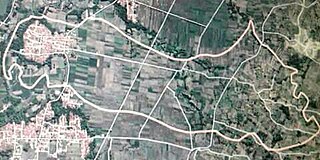
Dukuhjati Wetan is one of the villages located in the district of Kedungbateng, Tegal, Central Java, Indonesia.

Ranu Pani or Ranupani is a volcanic lake in Ranu Pani Village, Senduro District, Lumajang Regency, East Java. Ranu Pani is part of the Bromo Tengger Semeru National Park (TNBTS). Initially, the area of Ranu Pani was around one hectare, but now it is estimated to be only 0.75 hectares due to the rapid sedimentation rate. The population of Ranu Pani is around 2,000 people.
Muara Gembong is a district of Bekasi Regency, West Java, Indonesia.
References
- ↑ Heri Cahyo (2015). "Desa Purwodadi, Desa Wisata". kompasiana.com. Retrieved 10 January 2015.
- ↑ Based on the story of generations of local residents, should be reviewed and investigated in
- ↑ Based on the story of generations of local residents, should be reviewed and investigated in
- ↑ Heri Cahyo (2016). "Peta Dusun Ngande - ande". dusunngande-ande.blogspot.com.